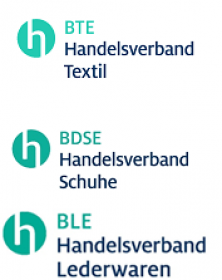Green Fashion: 55th INNATEX under the motto TOGETHER
From 18 to 20 January 2025 in Hofheim-Wallau near Frankfurt, this international trade fair will be presenting sustainable fashion collections, footwear and accessories for all generations and all occasions.
Labels invest in their presence at the fair
For the first time, organiser MUVEO GmbH has positioned DESIGN DISCOVERIES in the foyer of the Messecenter Rhein-Main, instead of on the first floor as previously. The new location for the first-time exhibitors featured in DESIGN DISCOVERIES, immediately inside the main entrance, ensures that the labels covered by this support programme are immediately visible. The four brands, selected by a jury, include Maison Labiche from France, embroiderers of womens-, mens- and kidswear. Ikiala brings accessories made of Madagascan raffia. Kiwistories supplies fashion items with prints and patterns, while Delin uses linen for its shirts, T-shirts, clothing etc.
The area previously occupied by DESIGN DISCOVERIES has now been used to provide larger spaces for exhibitors. “We have noted that for some years now the stands have been growing ever larger,” comments Jens Frey, Managing Director of MUVEO GmbH. “The increasing willingness to make this type of investment is something we see as a positive signal from the sector, especially in the face of continuing commercial challenges. The labels are saying something with their generously designed areas – it’s well worth a visit!”
Insider expertise for conventional retail too
Events of various kinds will take place in the Talk Area on the first floor: one highlight of the programme is the Retail Association’s expert panel on the Monday, aimed primarily at buyers. Under the title ‘Best practices in retail: ’Tackling challenges with active customer engagement and other strategies’, a panel comprising Dr. Eva Stüber of the Institute for Retail Studies Cologne (IFH), Jost Wiebelhaus of Frankfurter Laufshop, Olivia Dahlmen of Quartier Frau, Marion Käfer of Lumiis and Silvio Zeizinger of the Hessen Retail Association (Handelsverband Hessen e.V.) will be speaking on trends and solutions for retail. Cheryll Mühlen, Editor-in-chief at specialist magazines Textilmitteilungen, J'N'C and Green Knowledge, is the moderator.
„Community-building will be even more important in the future“
The motto of the 55th INNATEX, ‘TOGETHER’, is a call to those involved in the Green Fashion sector to stick together, in order to find synergies and maintain confidence. “Smaller businesses in particular can benefit in very concrete ways from collaboration,” says Hitzel. “The opportunities range from sharing resources and knowledge to extending reach and saving costs. I also believe that community-building will become even more important in the coming years.”
Ubermut für MUVEO GmbH
































